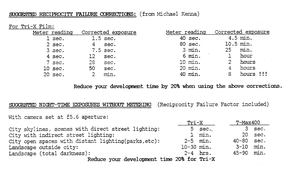nictu
Member
Hi,
I would like to try some long exposure photography. I have done this successfully with my digital cameras, but I thought I could get a nice effect using my Dads' old Praktica BCA 35mm SLR. I have a choice of 35mm f1.8, a 50mm f2.4 and 135mm f3.5 lenses. The SLR has a Bulb mode, but I will need a cable release, although I am not sure which one to buy or if they are all the same. I have a tripod and a roll of Kodak ColourPlus 200 ISO which can be my sacrificial practice film.
If anyone has any tips ( I have been searching the web too ) I would very much like to hear them, given the equipment I own.
Many Thanks,
Nick.
I would like to try some long exposure photography. I have done this successfully with my digital cameras, but I thought I could get a nice effect using my Dads' old Praktica BCA 35mm SLR. I have a choice of 35mm f1.8, a 50mm f2.4 and 135mm f3.5 lenses. The SLR has a Bulb mode, but I will need a cable release, although I am not sure which one to buy or if they are all the same. I have a tripod and a roll of Kodak ColourPlus 200 ISO which can be my sacrificial practice film.
If anyone has any tips ( I have been searching the web too ) I would very much like to hear them, given the equipment I own.
Many Thanks,
Nick.






